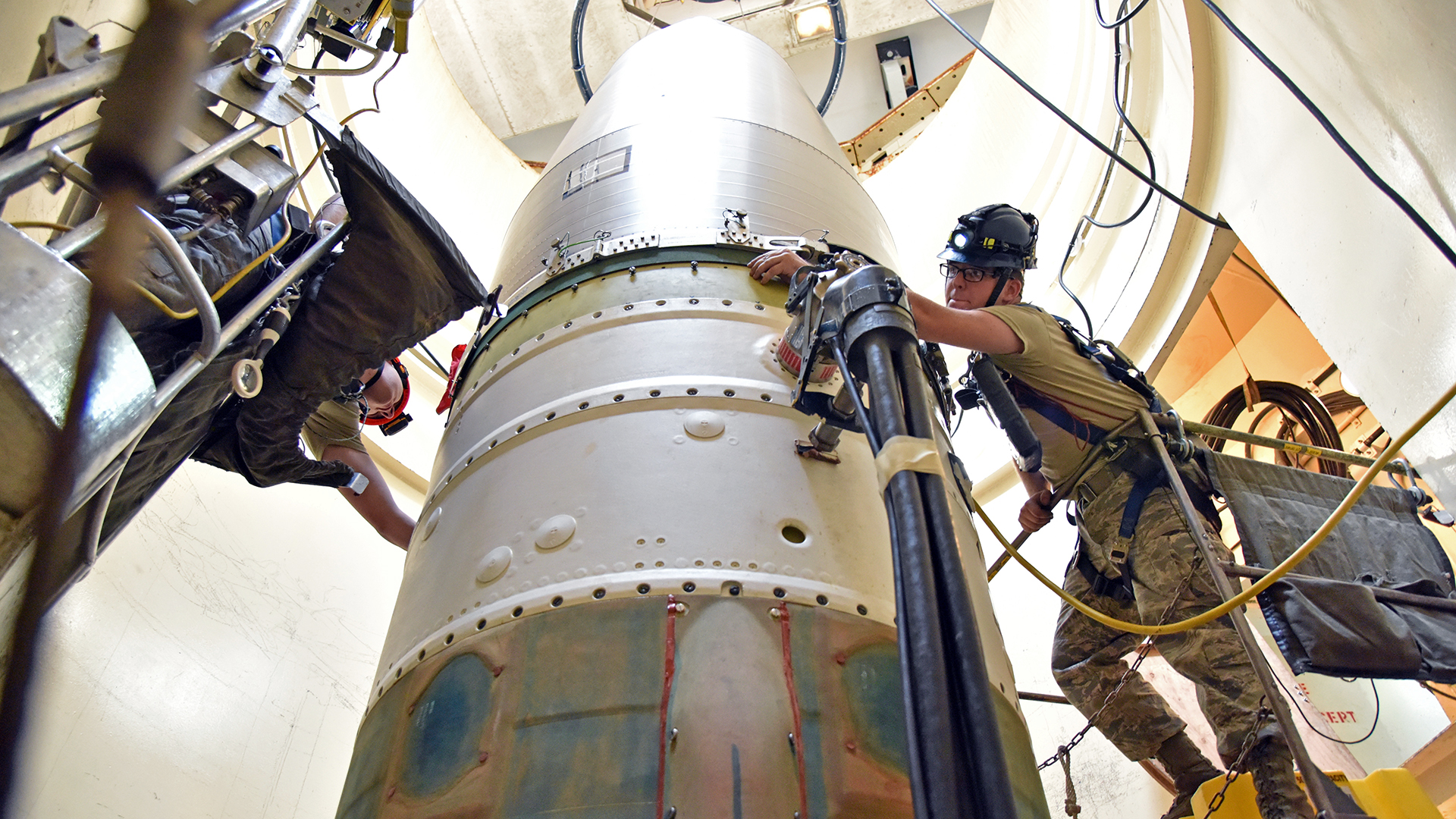Chinese-made electronics equipment officially installed close to U.S. military bases could threaten communications links vital to the Pentagon’s land-based nuclear deterrent forces, according to a recent CNN report. The latest findings have apparently caused a significant degree of alarm in the FBI and, furthermore, suggest that these kinds of issues involving Chinese technology are becoming a growing concern.
CNN’s report, by Katie Bo Lillis, draws upon an FBI investigation looking in particular at the use of equipment made by Chinese firm Huawei. This investigation has been driven by a spike in Chinese espionage activities in the United States in recent years and has resulted in what the article describes as a “frenzy of counterintelligence activity by the FBI and other federal agencies.”
The investigation, the report contends, has been running since at least 2017 and has looked into Chinese land purchases close to sensitive U.S. facilities, more traditional spy rings, and Chinese surveillance devices alleged to have been planted near U.S. military and government infrastructure.
Of particular interest, and concern is the FBI’s supposed discovery of Huawei equipment located on cell towers in proximity to U.S. military bases in the rural Midwest. CNN says it has spoken to “more than a dozen” sources familiar with the matter, including current and former national security officials. They confirmed that the equipment “was capable of capturing and disrupting highly restricted Defense Department communications.”
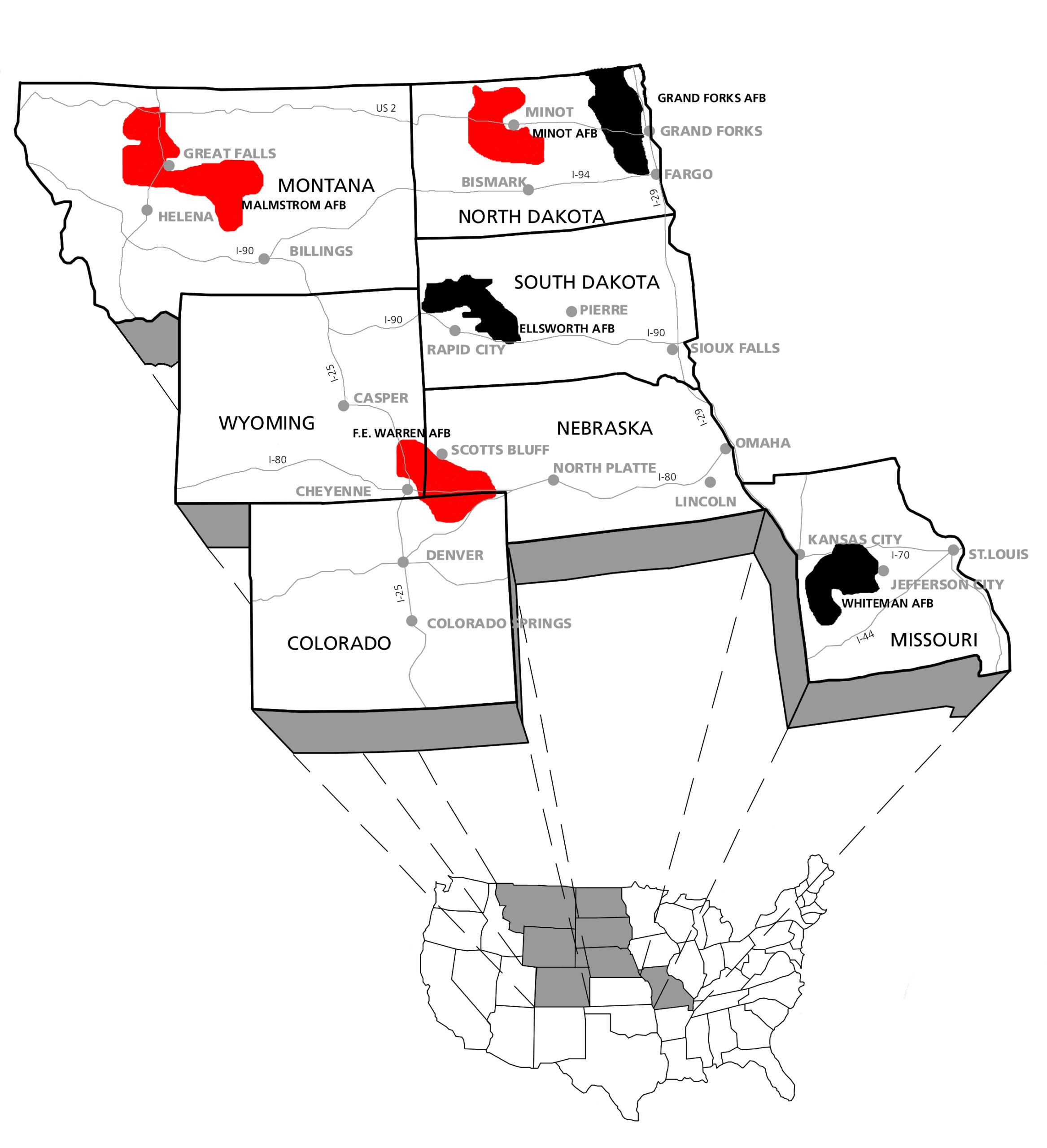
Most critically, those communications reportedly include those used by U.S. Strategic Command (USSTRATCOM), responsible for the country’s nuclear weapons. In the Midwest, the command’s facilities include extensive intercontinental ballistic missile (ICBM) fields in Colorado, Montana, North Dakota, Nebraska, and Wyoming.
In 2019, it was reported that Huawei cellphone towers were located close to Malmstrom Air Force Base in central Montana, which is home to more than 100 silos for Minuteman III ICBMs. Subsequent reports suggest that the primary area of inquiry are the towers stretching along Interstate 25 in Colorado and Montana, as well as into Nebraska.
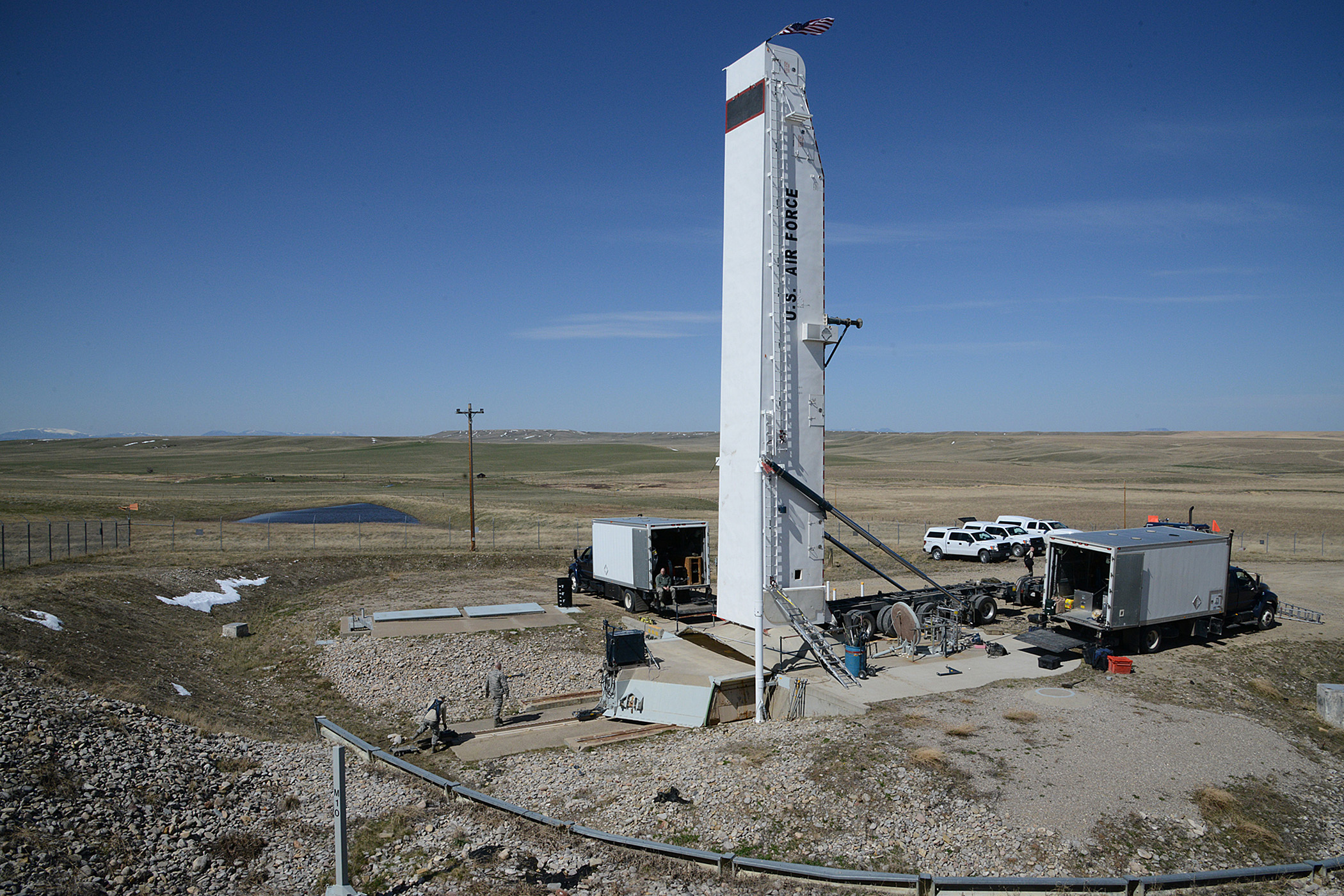
The following year, there were reports that towers close to ICBM silos in Nebraska could be vulnerable to Chinese espionage.
It’s not immediately clear how the equipment might be used against the U.S. military. However, “capturing and disrupting” indicates that the FBI consider that the Chinese would not only be able to intercept or even spoof highly classified communications but also interfere with them. This might include jamming these channels to close them down, or it could possibly involve more sophisticated techniques, such as sending false signals. However, the credibility of these scenarios has been questioned by some. James Acton, co-director of the Carnegie Nuclear Policy Program, observes that cell phones operate at very different frequencies compared with the U.S. military communications they would be expected to jam.
Eduardo Rojas, head of the radio spectrum lab at Embry-Riddle Aeronautical University in Florida, told CNN that listening in on military communications was “feasible.” He added: “It’s not technically hard to make a device that complies with the FCC that listens to nonpublic bands but then is quietly waiting for some activation trigger to listen to other bands.”
Speaking to Reuters, an unnamed individual said to be familiar with the matter pointed to concerns that China would be able to “obtain sensitive data on military drills and the readiness status of bases and personnel.”
However, it’s unclear to what degree Chinese intelligence would actually be able to decipher the encrypted messages used by USSTRATCOM for transmitting sensitive data. There is also the fact, raised by Stephen Schwartz, a nonresident senior fellow at the Bulletin of the Atomic Scientists, that the command primarily relies upon secure, underground landlines for its communications, providing an altogether more rugged and resilient network.
Schwartz told The War Zone: “With regard to the ICBMs, it doesn’t seem entirely credible to me for the reasons I laid out in my thread over the weekend. Whatever’s on those cellphone towers isn’t going to intercept let alone disrupt the primary underground landlines the ICBM force relies upon. Could they interfere with the backup radio and satellite communications systems? I’m no expert in that so … maybe? But, again, those channels are only utilized if the underground lines become unavailable, and that’s only likely to happen in a nuclear war or, I suppose, a massive cyberattack.”
As well as eavesdropping over the cellphone networks, the FBI has reportedly been investigating the appearance of high-definition surveillance cameras, also mounted on towers, and used to provide live streams for weather and traffic information. According to anonymous officials, there has been concern that these could be used for monitoring the movements of U.S. military vehicles in broadly the same areas, along Interstate 25.
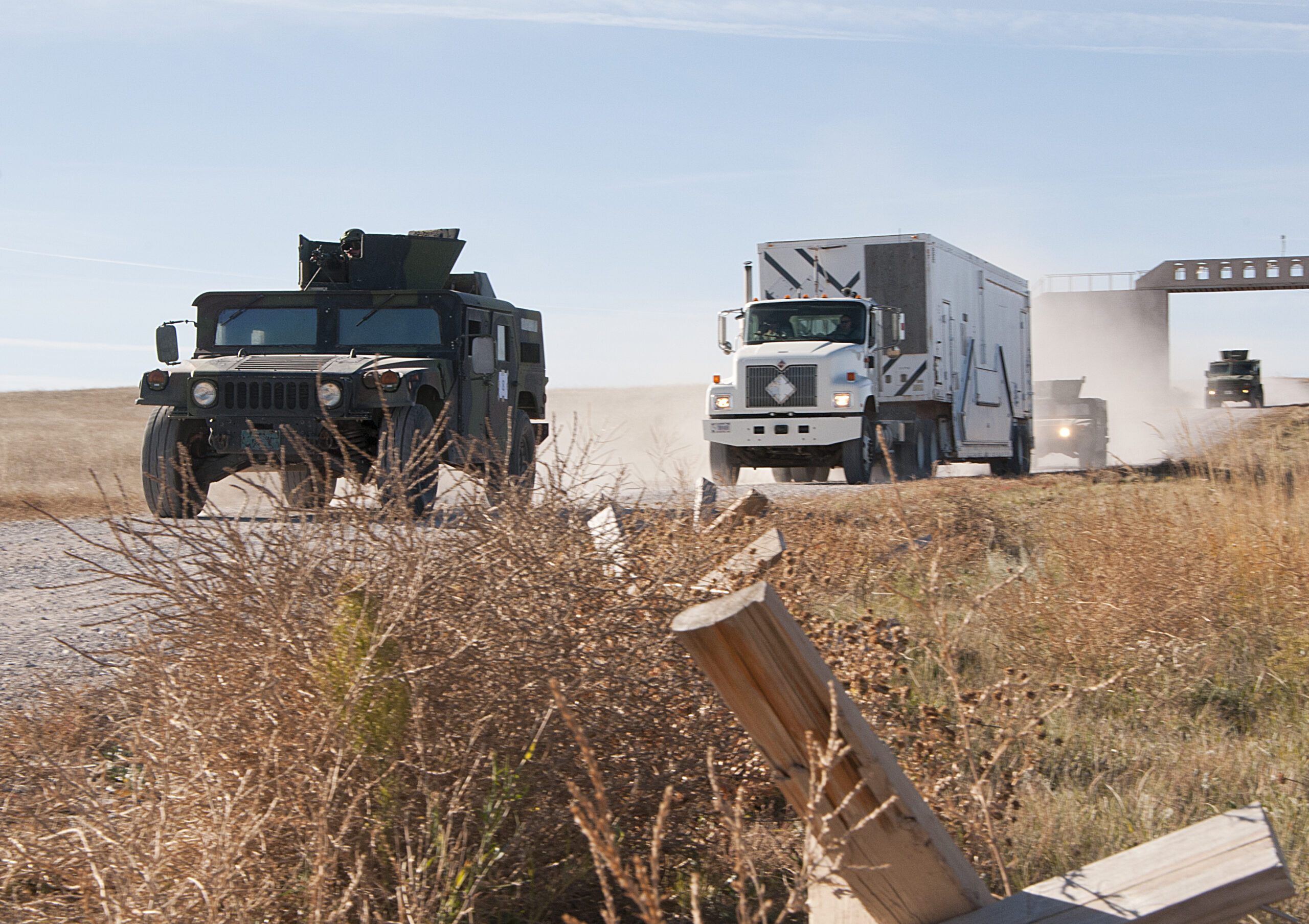
Schwartz continued: “You might get some quasi-open-source intelligence from the tower-mounted cameras — like seeing in real time the large trucks used to occasionally remove or replace missiles before and after periodic flight tests, the armored convoys used to transport nuclear warheads to and from the base, when launch crews arrive or depart for work, or when maintenance teams are on site at the silos (meaning the missile would be unavailable for use for a period of at least several hours).”
“But given that there are 400 Minuteman IIIs on 24/7 alert scattered across thousands of square miles in five states, knowing that a handful are unavailable for use doesn’t much alter the threat calculus if they start flying toward you. The only potentially-significant threat I can see is that the equipment on the towers could enable someone to monitor the movements of everyone using or in proximity to (pinging) the cellphone network, including Air Force personnel and civilian contractors operating and maintaining the ICBMs. With that data, you could learn who works where and on what shifts, what routes they drive, where they live, whom else they know, and what local businesses they frequent. That digital data could then possibly be used to identify, recruit, or compromise selected individuals with access to secret information about the ICBMs or nuclear war plans in general. But that’s not what the report says is most concerning to the FBI and other security professionals.”
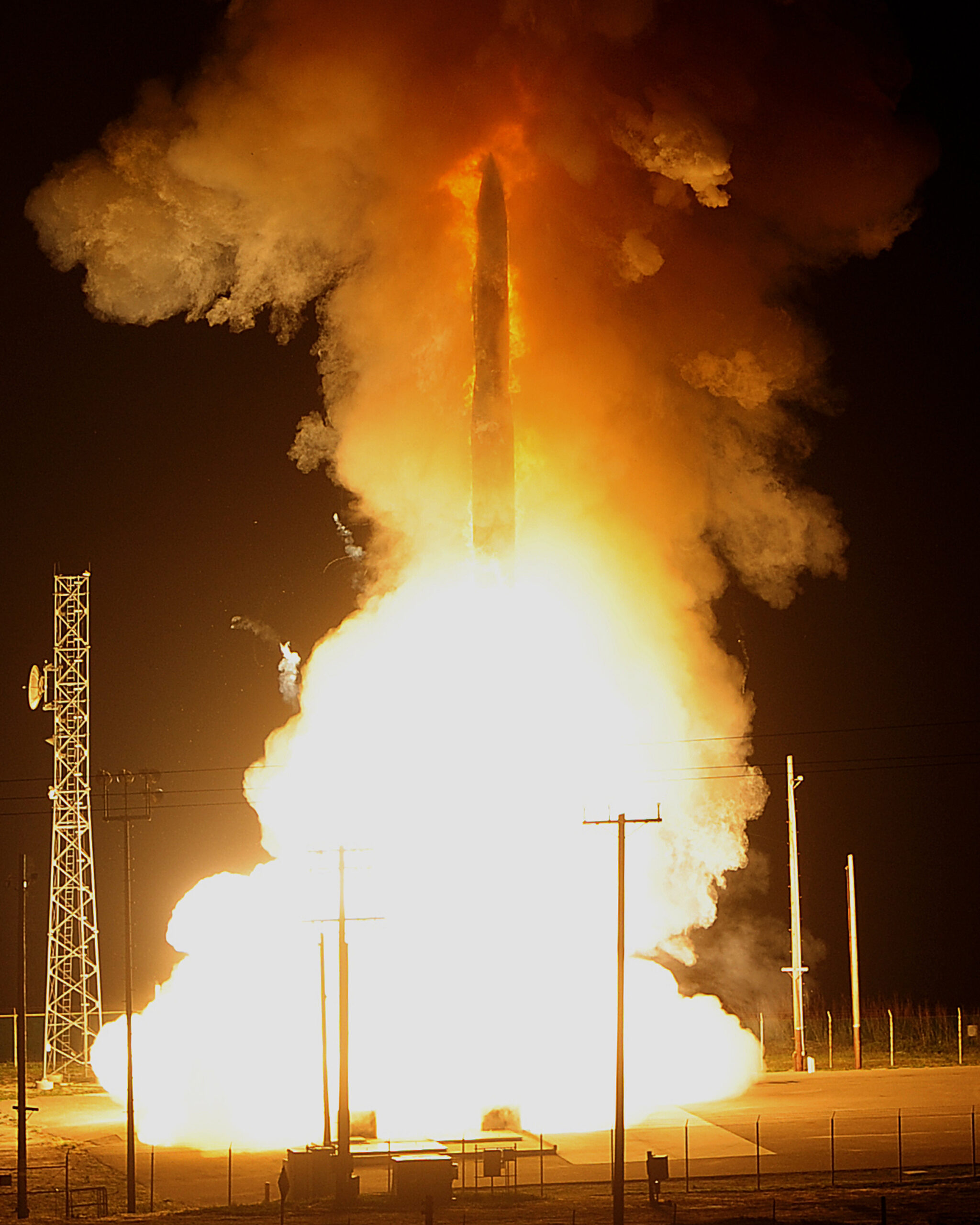
As it stands, we also don’t have any evidence so far that China was shown to actually be using the equipment in question for any kinds of nefarious purposes, although that remains possible. But meanwhile, it’s clear that intelligence officials are dealing with China’s ability to intercept and disrupt the flow of classified U.S. data.
For its part, the Chinese government “strongly denies” any espionage against the United States, according to CNN.
Meanwhile, Huawei told the news channel that its equipment is not able to intercept any Pentagon communications. The firm also said that all its technology in the United States is first tested and approved by the Federal Communications Commission (FCC).
This, however, is refuted by different sources who spoke to CNN, including one former FBI official who is familiar with details of the investigation. Of the Huawei equipment, that official said: “This gets into some of the most sensitive things we do. It would impact our ability for essentially command and control with the nuclear triad. That goes into the ‘BFD’ category.”

Of course, if that’s true, and the cell tower equipment does allow eavesdropping on USSTRATCOM communications, it would presumably mean that China was similarly able to covertly hoover up data from multiple other military and commercial channels, providing they were within range. In the past, Huawei has been accused of monitoring cellphone calls around the world, including in Australia. In the Netherlands, meanwhile, the company was alleged to have potentially gained access to conversations by the then prime minister.
When the United Kingdom planned to have Huawei build its 5G infrastructure, the U.S. declared that this could put British sovereignty at risk and led to one U.S. senator warning that the U.K.’s decision could block future deployments of U.S. Air Force F-35 stealth fighters to the country. In the end, the United Kingdom reversed its decision.
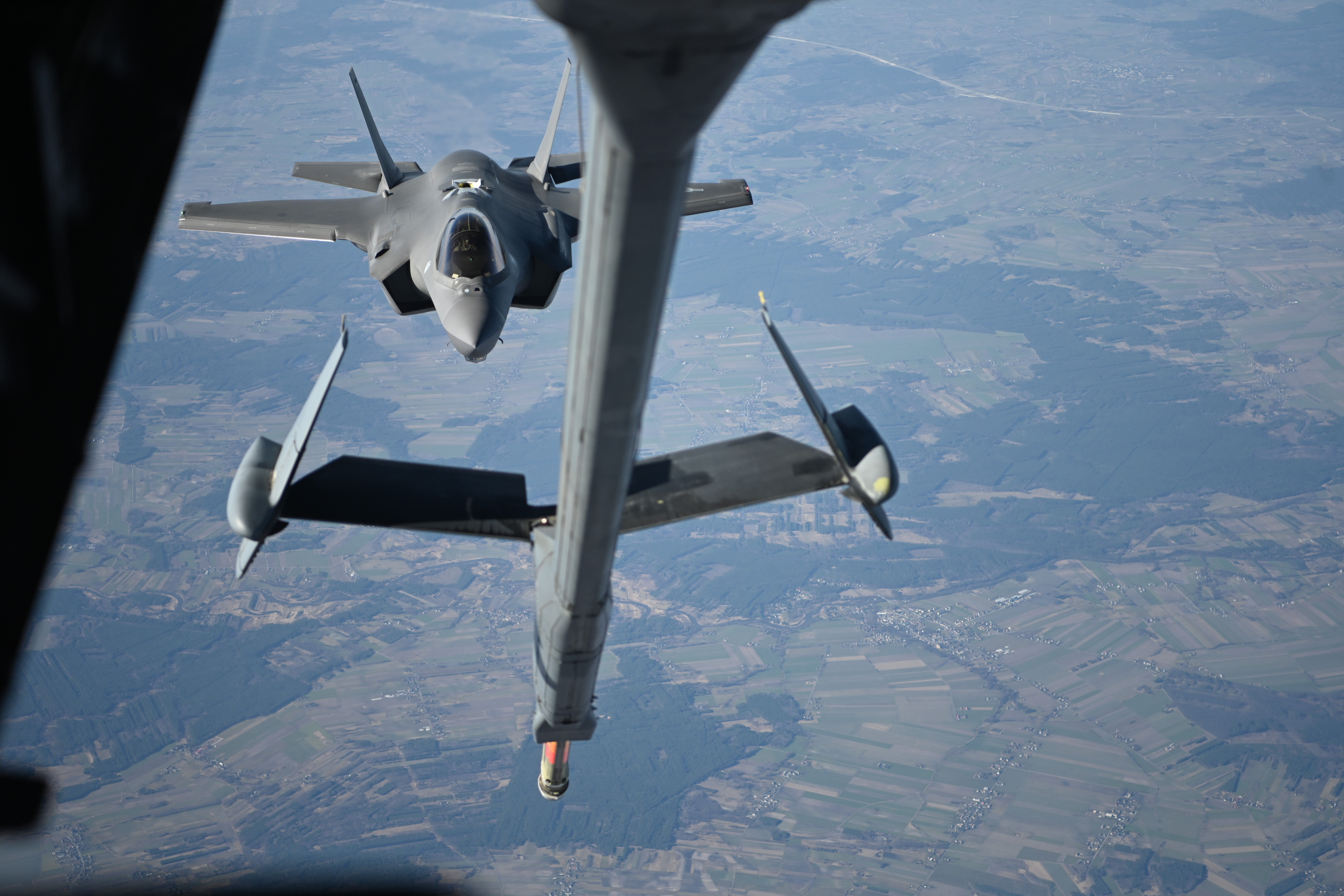
While the latest investigation was ongoing, the U.S. government was already taking action to prevent potential espionage, with Huawei at the center of this. As that firm began to be seen increasingly as a potential threat to national security, U.S. regulators stepped in. Since then, Huawei has been repeatedly implicated in U.S. investigations, with successive trade restrictions having been placed on the company in recent years.
In 2019, actions included blacklisting Huawei (together with another Chinese firm, ZTE), preventing U.S. communications firms from buying their equipment using federal subsidies that are intended to promote cell services in rural areas.
A year later, further measures came into place with the aim of removing cellular technology produced by Huawei and ZTE from communications networks in rural areas of the United States. This measure stalled, however, with the affected telecom companies have yet to receive the federal reimbursement money they had been expecting. In all, some 24,000 pieces of communications equipment were affected.
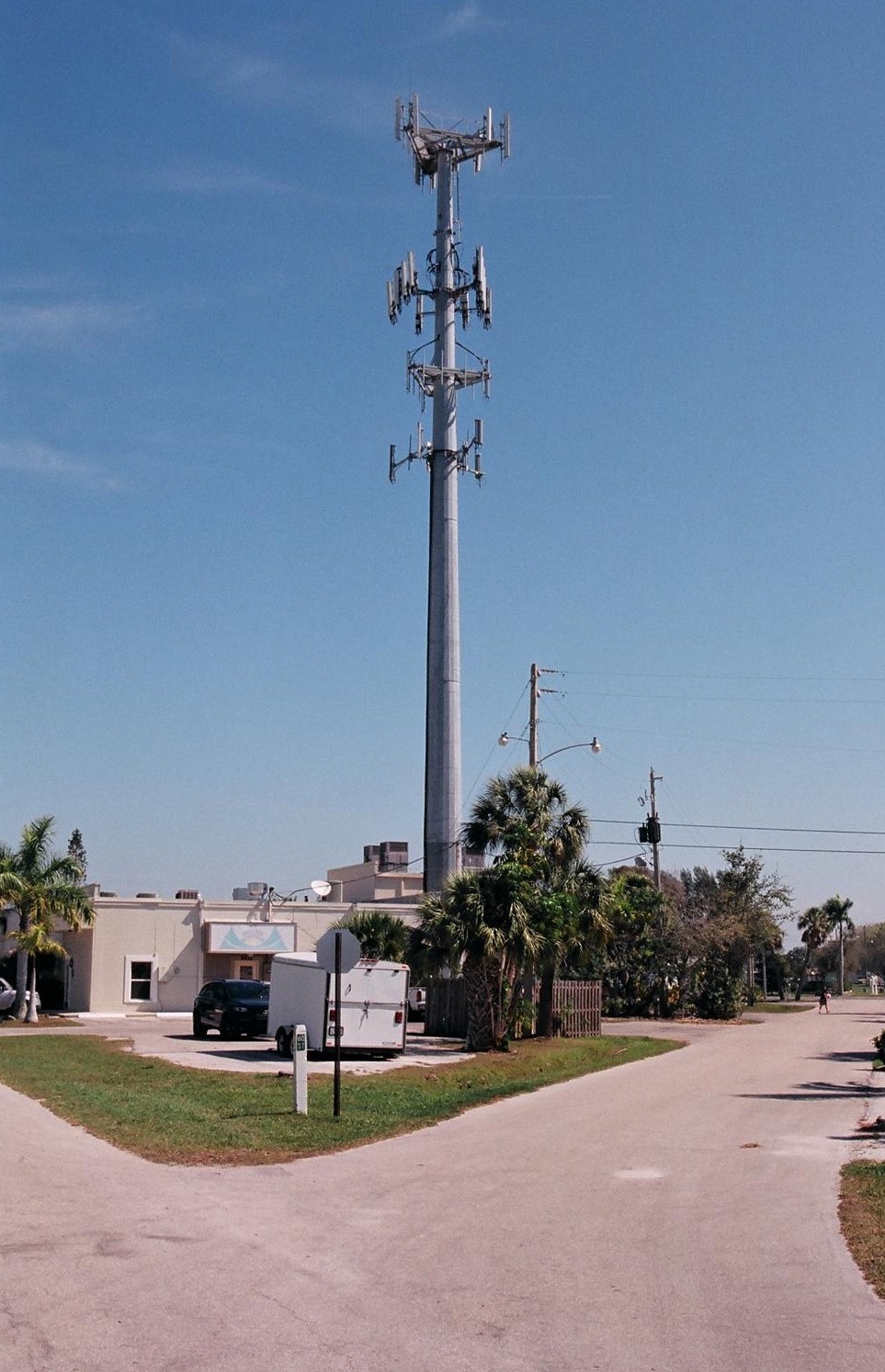
Under the Biden administration, national security officials have continued to cast a critical eye over the role played by Huawei within U.S. communications infrastructure. This investigation is ongoing but could ultimately lead to a ruling that demands U.S. telecom carriers remove Huawei equipment from their networks.
Whatever the reality of China’s ability to listen in on or interfere with USSTRATCOM and other critical communications, the fact that the latest investigation is now in the open reflects a new approach to Beijing’s presumed espionage tactics. According to FBI Director Christopher Wray, U.S. intelligence officials open a new China counterintelligence investigation every 12 hours, not including cyber theft, which is judged to be an even bigger issue.
The Chinese operate “a bigger hacking program than that of every other major nation combined and have stolen more of Americans’ personal and corporate data than every nation combined,” Wray said.
And although evidence of Chinese espionage via Huawei technology atop cellphone towers hasn’t been provided, investigators are apparently particularly suspicious about the way that these systems have proliferated in certain areas. These are not only close to U.S. military bases but are also areas where their installation is judged to be unprofitable for Huawei.
It’s notable that there have, in the recent past, been other concerns that the U.S. Air Force’s ICBM facilities in the Midwest have been vulnerable to espionage by foreign powers.
This has included investigations into how Chinese companies may be buying up land close to these areas. According to CNN, this has led to at least one instance of a proposed commercial sale being shut down, after it became clear that the land in question was “near highly sensitive military testing installations in Utah .” Similar worries emerged when it became clear that a former Chinese People’s Liberation Army general owns 200 square miles of land adjacent to Laughlin Air Base in Texas.
Meanwhile, Grand Forks Air Force Base, North Dakota, which was previously home to ICBMs, and now supports other Air Force assets, including RQ-4 Global Hawk reconnaissance drones, has recently been at the center of different Chinese-related concerns. A corn milling plant that was planned to be built nearby by the Chinese Fufeng Group has come under scrutiny due to what some have speculated could be an espionage risk. Now, the future of that project will be determined by a U.S. government review.
In the past, The War Zone has also looked deeply into the flurry of reports of formations of drones received by law enforcement agencies in numerous rural counties in eastern Colorado and adjacent areas of Nebraska and Kansas. The ‘mystery drone’ incident led to concerns expressed by at least two U.S. senators as well as Colorado’s governor and state public safety agency.
At the center of these reports were F.E. Warren and the 90th Security Forces Group regarding the spate of drone sightings. The 90th Security Forces Group provides security both for F.E. Warren Air Force Base in Wyoming and the 150 Minuteman III ICBMs operated by the 90th Missile Wing.

Mapping the complex wireless communications networks in and around the ICBM fields was one theory as to what the drones could have been doing, if indeed they existed as so many witnesses claimed.
Despite their efforts, the Federal Aviation Administration (FAA) was unable to determine the origin of the flying formations of drones reported by many credible witnesses in December 2019 and January 2020.
The critical importance of the ICBM fields to the strategic posture of the United States cannot be downplayed and, with that in mind, it’s not entirely surprising that these areas are subject to a higher level of scrutiny in regards to potential espionage or unexplained events.
Exactly how China fits in with suspicions of espionage directed against these facilities is open to question, at least until U.S. intelligence agencies provide hard evidence of such activity having taken place. Nevertheless, there’s now a long track record of allegations against Beijing, specifically relating to American ICBMs. Here, again, the true scale of the risk should be looked at carefully, as Stephen Schwartz observes:
“Even if, for the sake of argument, China could somehow compromise the entire ICBM fleet and prevent or delay its use, we have eight Ohio class ballistic missile submarines based in the Pacific Ocean carrying 160 Trident II D5/LE SLBMs armed with four to five warheads apiece that could still obliterate China. (And it’s worth noting that while some of our ICBMs may indeed target China, we’re highly unlikely to use them to do that in anything but the most extreme circumstances — i.e., all-out nuclear war — for the simple reason that they would have to overfly Russia first to reach China, which would be incredibly provocative and dangerous.)”
Of course, only a couple of these submarines are on deterrent patrol in the Pacific and the Atlantic at any given time, but America’s submarine-based second strike deterrent is extremely robust, and this is in addition to the bomber of the triad, that is far more flexible but less survivable. Still, the Pentagon does not see it quite this way. The ICBMs are of the highest strategic priority, and any potential security threat to them is taken extremely seriously.
Whatever the truth of the latest allegations, recent developments suggest that the U.S. is pursuing somewhat of a more transparent approach when it comes to releasing details of suspected Chinese intelligence efforts on U.S. soil. With that in mind, there could well be more accounts of similar Chinese activities directed against ICBMs and other U.S. military infrastructure coming in the future.
Contact the author: thomas@thedrive.com
